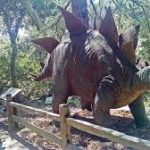Synchrotron X-ray sheds light on some of the world’s oldest dinosaur eggs0
- Ancient Archeology, From Around the Web
- April 17, 2020
Dinosaur ‘Easter eggs’ reveal their secrets in 3D thanks to X-rays and high-powered computers

Dinosaur ‘Easter eggs’ reveal their secrets in 3D thanks to X-rays and high-powered computers

Research on Massospondylus carinatus embryos sheds new light on animals’ development

Antarctica was covered in rainforest in the time of the dinosaurs, according to a new study.

Reptiles inhabited prehistoric Morocco 100m years ago

Researchers from Edinburgh university have discovered a new dinosaur “stomping ground” on Skye.

In the 1980s, paleontologists found a dinosaur nesting ground with dozens of nestlings in northern Montana and identified them as Hypacrosaurus stebingeri, a species of herbivorous duck-billed dinosaur that lived some 75 million years ago (Cretaceous period). Now, a team of researchers from the United States, Canada, and China has investigated molecular preservation of calcified cartilage in one of the Hypacrosaurus stebingeri nestlings at the extracellular, cellular and intracellular levels. They’ve found chemical markers of DNA, preserved fragments of proteins and chromosomes in the dinosaur chondrocytes (cartilage cells). The findings further support the idea that these original molecules can persist for tens of millions of years.

The dinosaur in the cupboard under the stairs.

The smoldering crater left by the apocalyptic space rock became a nice home for blue-green algae within years of the impact.

Marine die-offs after the impact may have created opportunities for the life that survived around the globe, new data reveal.

San Diego Natural History Museum paleontologist describes a dinosaur that is new to science, offers view into dinosaur-bird evolution